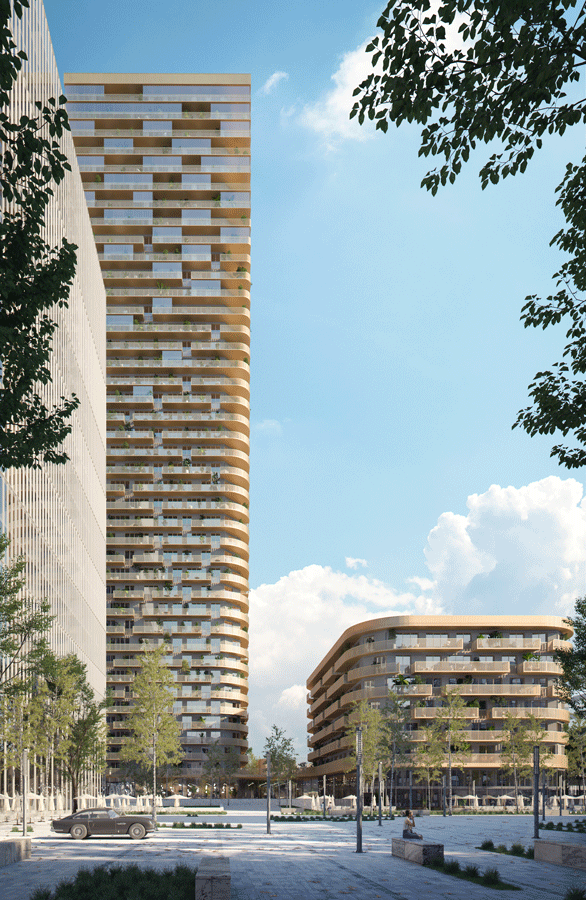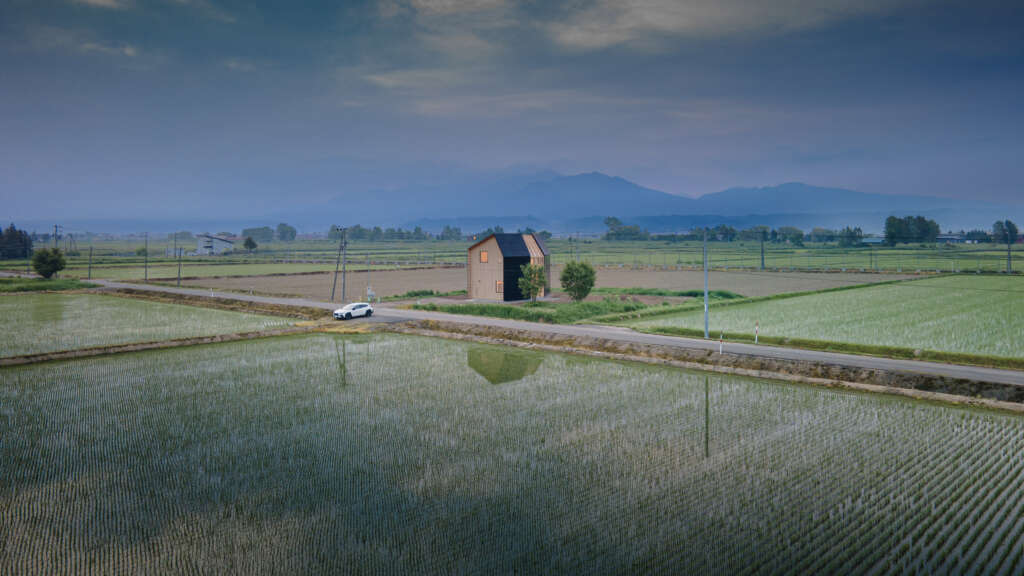
House W in Nakafurano
Architect: Florian Busch Architects
Location: Nakafurano, Hokkaido, Japan
Type: House
Year: 2021
Photographs: Florian Busch Architects
“Like the city in the past, the countryside is becoming the new catalyst for change.”
— Florian Busch Architects, 2007
Net Zero and Beyond
The following description is courtesy of the architects. House W is FBA’s first building to generate more energy than it consumes. Counterintuitively, the solution does not result in compactness but in breaking it up…
Bucking the (still ongoing) trend to move from the countryside to the city, the clients, a young family living in Tokyo approached FBA to design their new home on the western edge of the Furano Plateau — a 25-km-long and 5-km-wide strip in the centre of Hokkaido, renown for its cold powder-snow winters and beautiful summers.
Their plan is ambitious: A building independent from the local power grid, generating at least as much energy as it consumes. Net zero. (The built outcome goes further: Over the course of an entire year, House W produces almost twice the energy it consumes.)
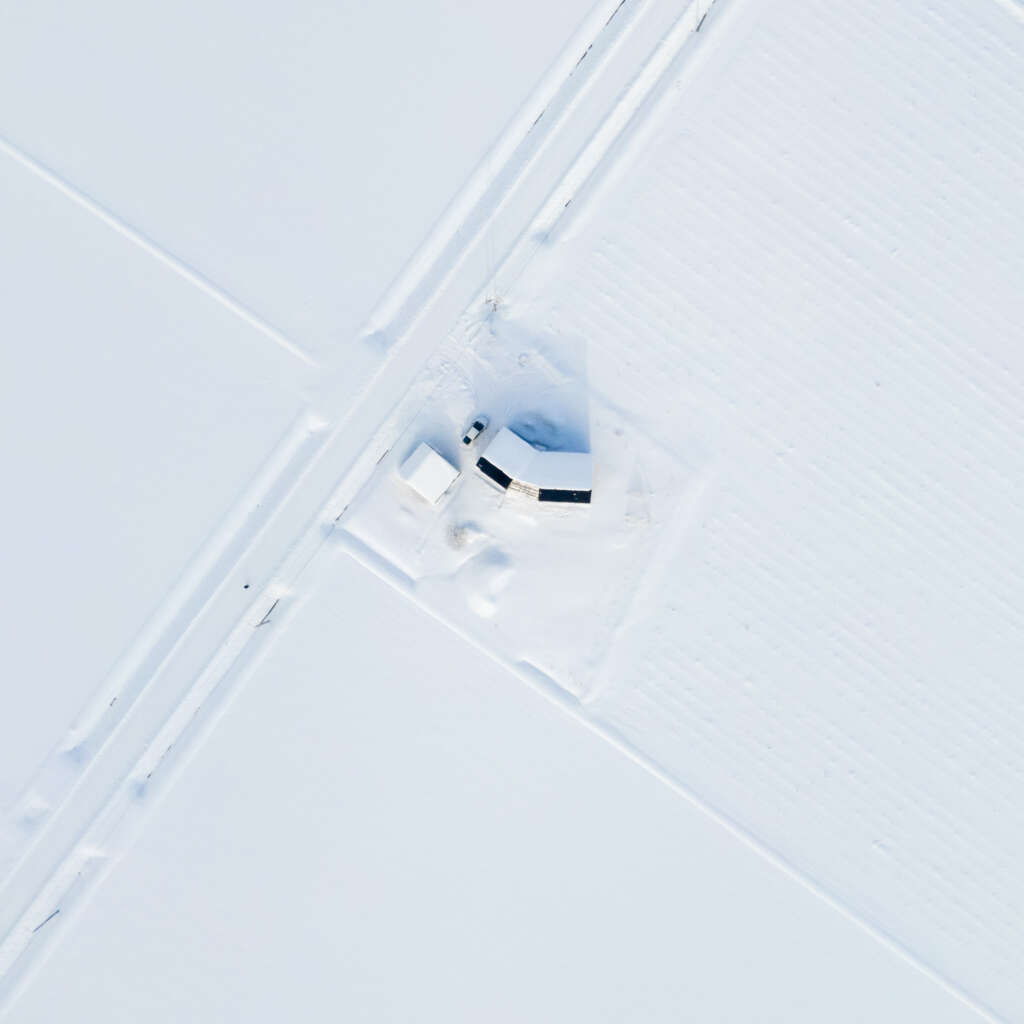
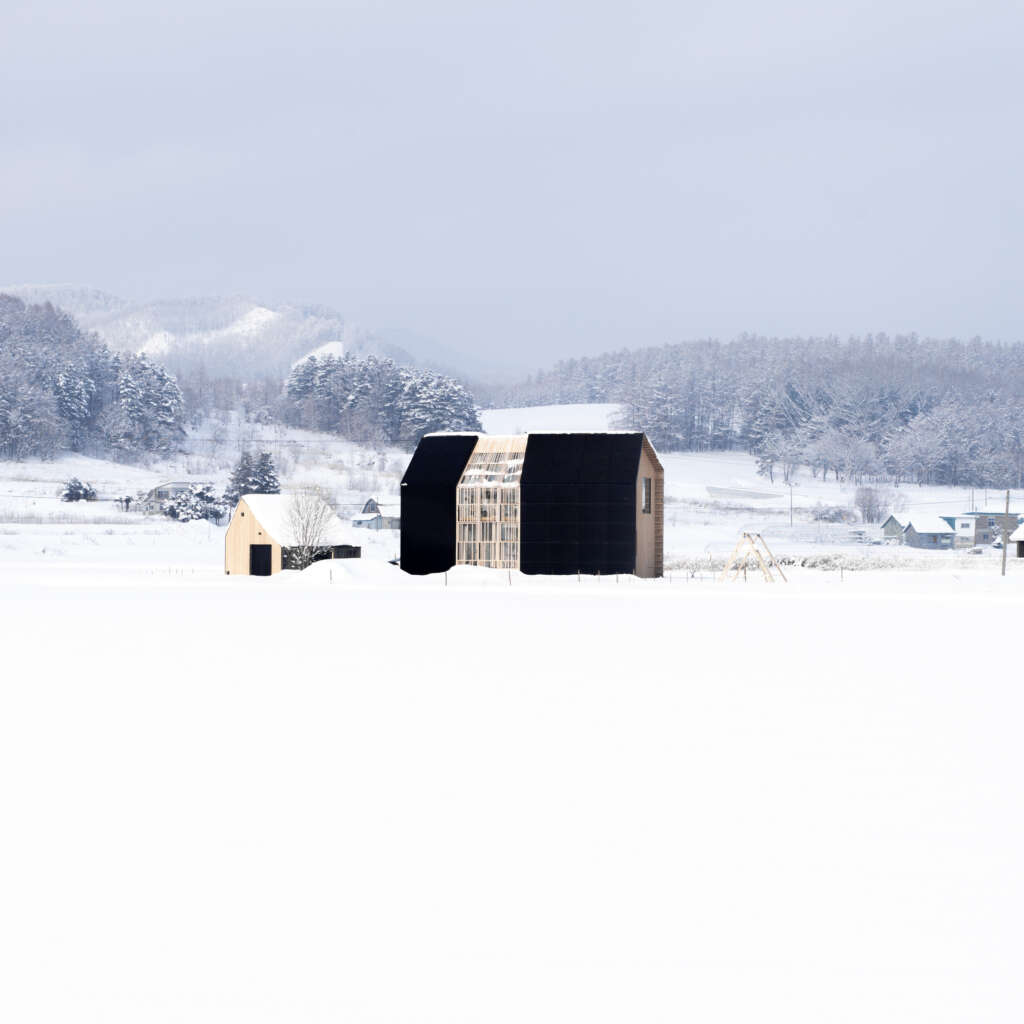
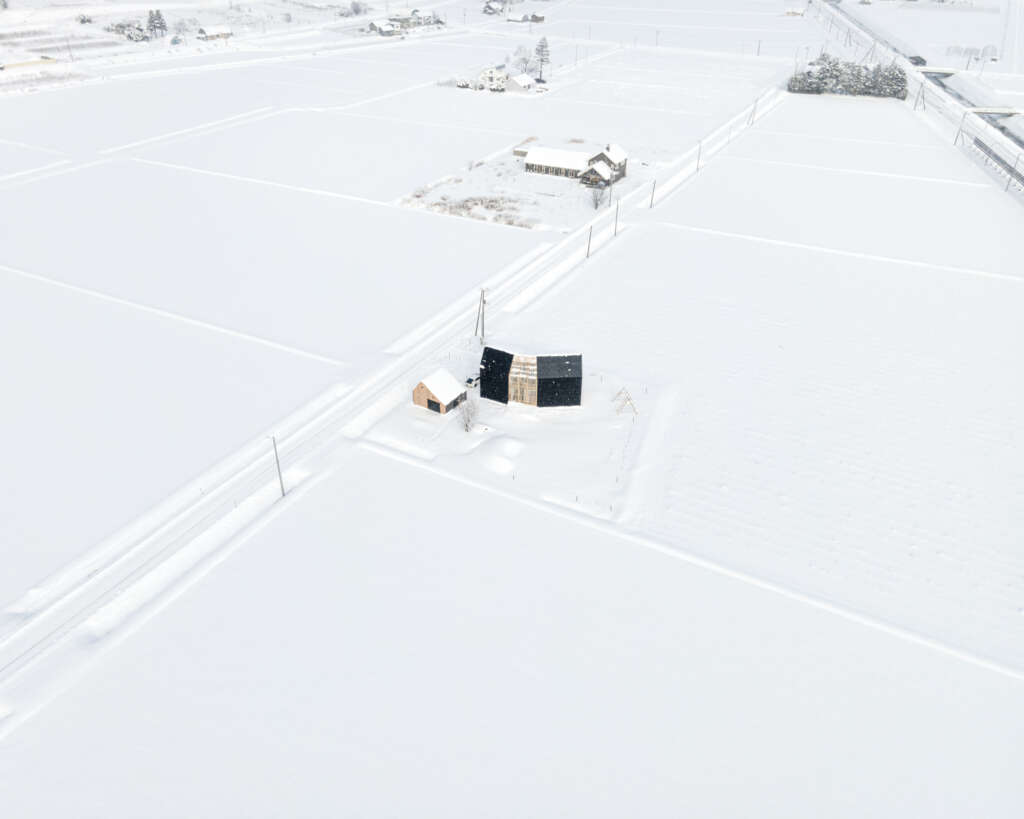
Farmland Efficiency
Consistent with these ambitions, they have bought a piece of land in the middle of active agricultural production: Farmland efficiency rather than countryside romanticism.
Originally the site of a farmer’s barn, our neighbours are rice paddies and asparagus fields, irrigation channels and roads. We are in the open. The only context is (mostly man-made) nature.
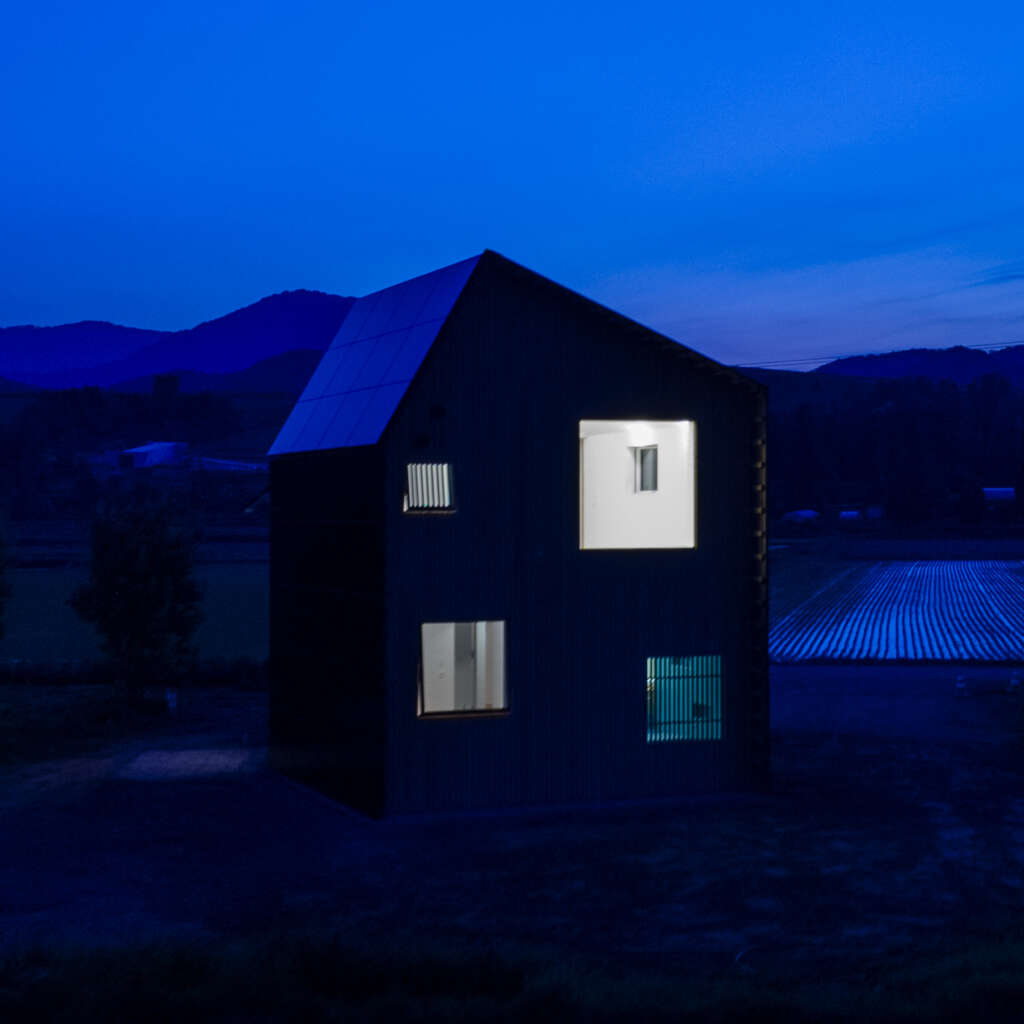
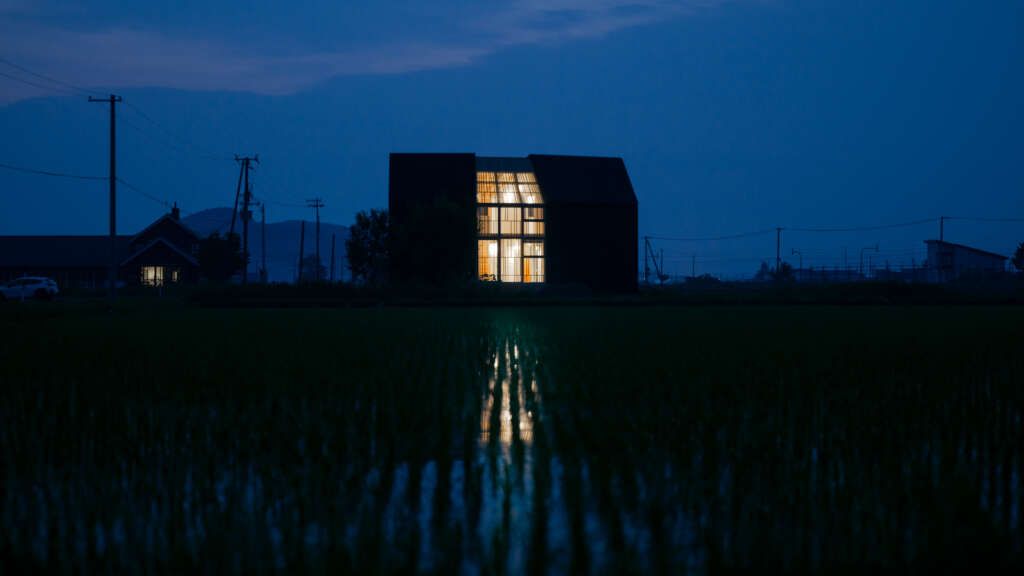
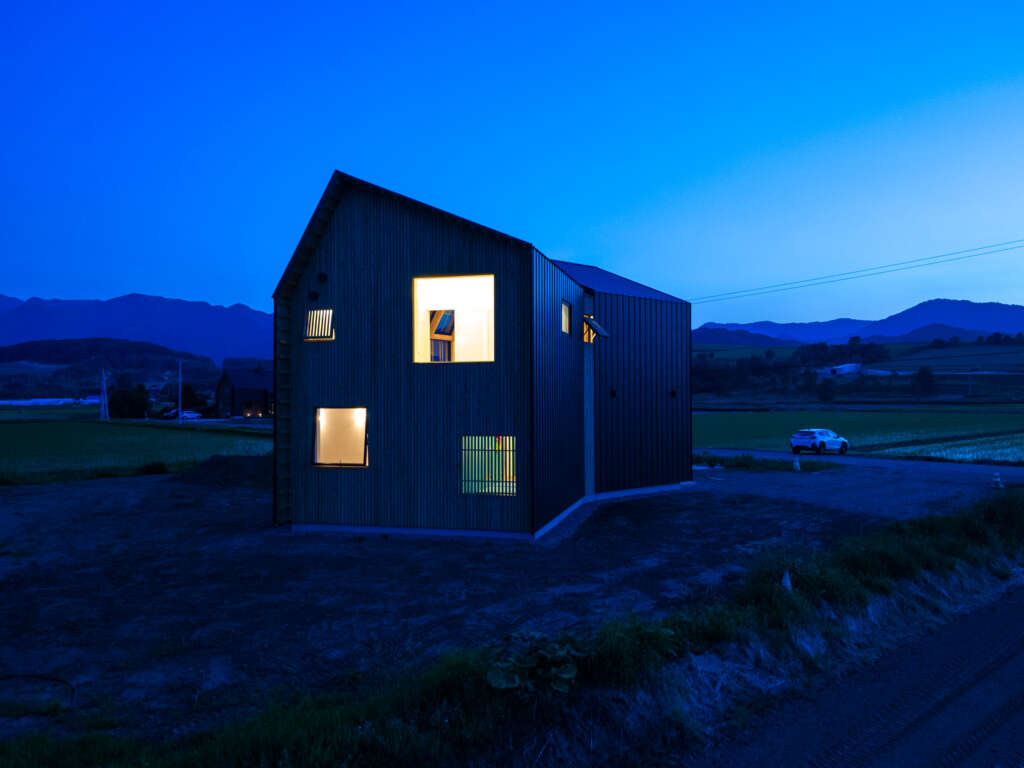
Like a Plant
1923: A house is a machine for living in. (Le Corbusier)
2023: A house is a plant for living with.
The clients want a simple wooden structure, which —not unlike a farmer’s barn— will focus on the essential. But where the barn’s “essence” is the rather straight-forward, passive task of sheltering tools, it is now more complex: providing the place for a family’s daily lives whilst depending solely on the natural energy available on site.
It is almost as if we are asked to model the crop, not the barn: An architecture which, like a plant, actively engages with its surroundings, adapts to its environment, makes use of what is available.
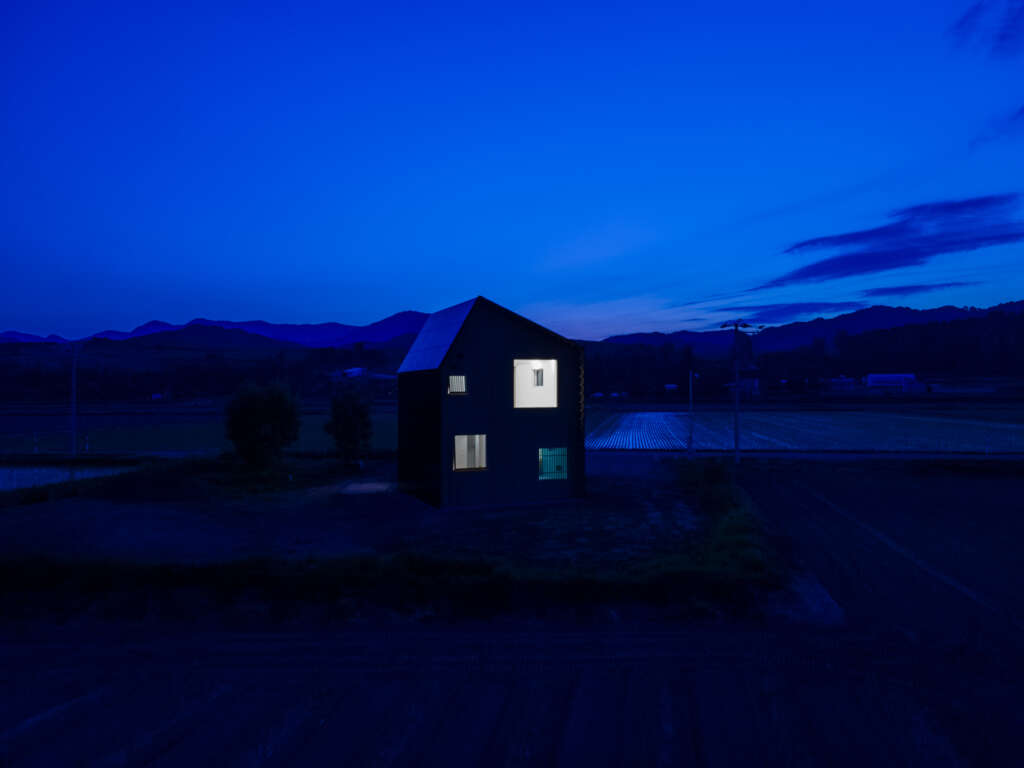
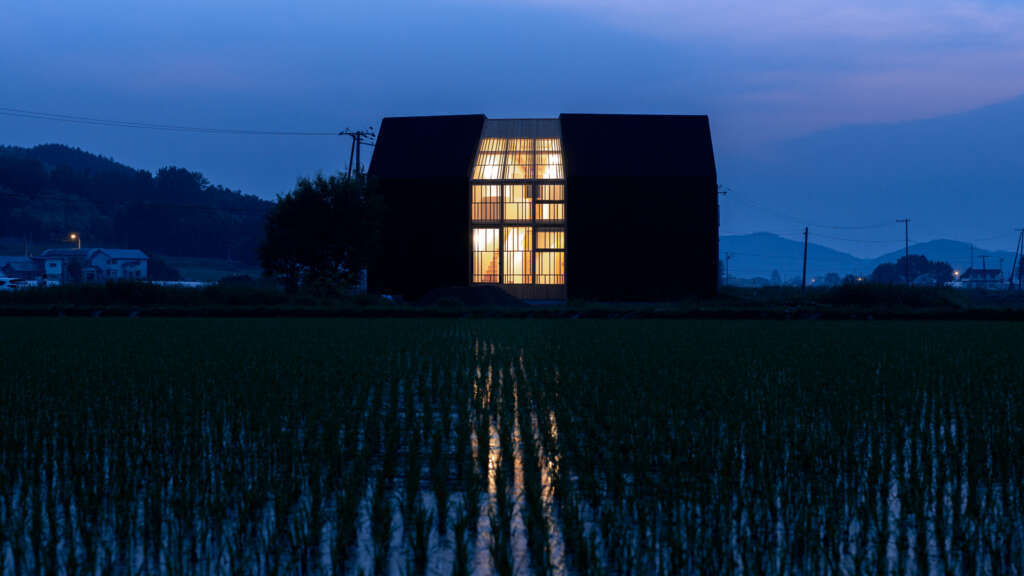
Views: Panorama Mix
The site’s immediate neighbours in the foreground are farmland and infrastructure: We are surrounded by fields, irrigation channel, roads, power lines.
The background is more picturesque: A panorama of the mountains defining the Furano Plateau. Between the Tokachi mountain range in the east and a hilly landscape in the north-west lies majestic Mt Furano Nishi in the south-west.
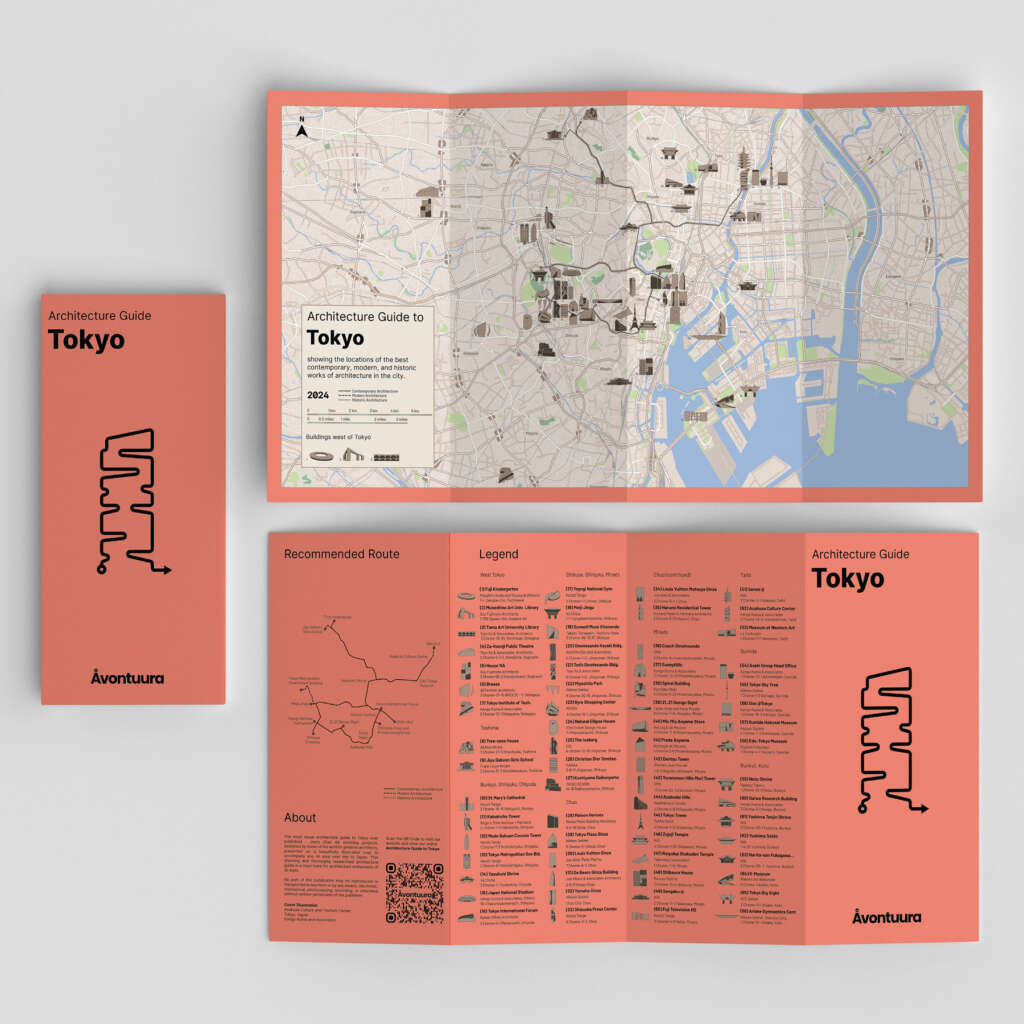
Architecture Guide to Tokyo
Explore all our guides at avontuura.com/shop
Water: Heat Pump
On site is a water source with flow and temperature constant throughout the year. Running this natural source through a heat pump can generate enough energy to provide underfloor heating as well as warm water for the entire house.
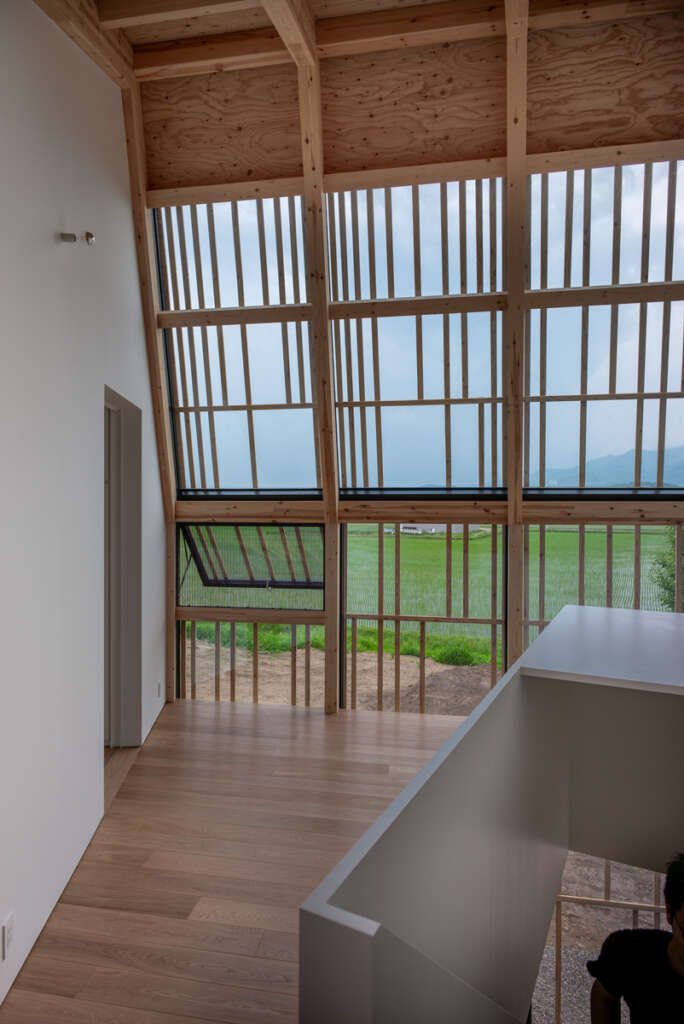
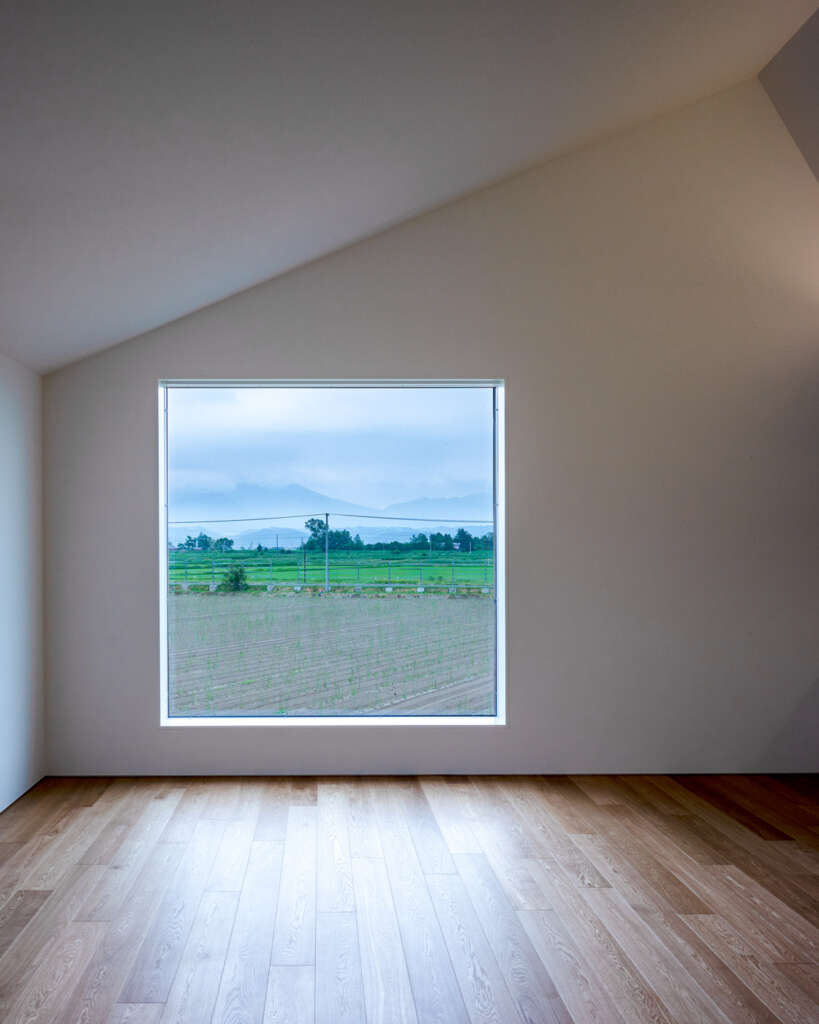
Sun: Solar Skin
The flat open plateau is ideal for harvesting sunlight. Unlike the usual approach to retroactively add photovoltaic panels to the most suitable places the design has (more or less inadvertently) provided, solar performance, both active and passive, is a core criterion from the beginning of our design process.
PV panels are not an afterthought but make up the building’s solar skin: a homogeneous, hard, dark exterior surface wrapping what in contrast appears as a soft, light interior. While this solar skin directly reaches for the sun’s energy, placement of openings plays just as crucial a role. Yet instead of piercing the solar skin, our strategy is more radical…
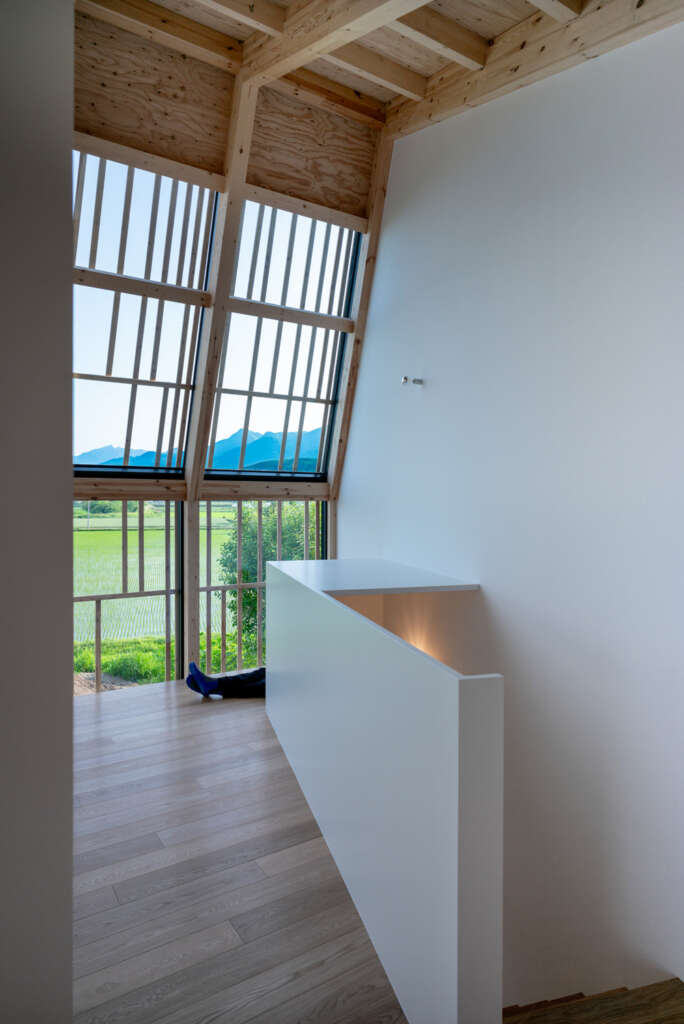
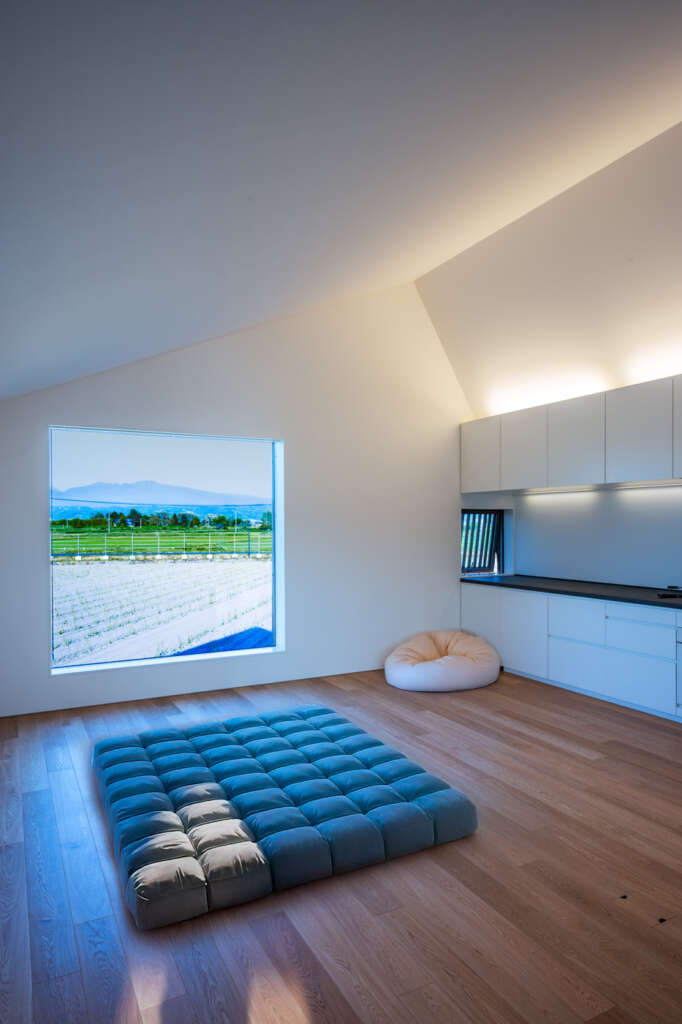
Breaking the Compact
As brief and budget would suggest, we begin with a compact volume reminiscent of a vernacular barn.
Whereas early studies try to directly orient towards the three main directions by polygonal footprints or by branching out, the designs leading to the final outcome are both more brutal and more subtle:
Breaking the compact volume into two and rotating each of them so that the short ends of the elongated volumes perfectly face the east and northwest mountains opens up an interstitial space looking towards Furano’s ski slopes in the southwest.
Unlike the earlier studies, breaking keeps the volumetric simplicity of the compact. The interstitial space reveals the compact volume’s interior as a fragile soft interior world in stark contrast to the homogeneous hard exterior. As if a snapped twig’s vascular tissue had not been completely severed, the wooden interior continues to flow between the two halves of the house.
The interstice plays a key role in regulating the climate of the building: It is the pivot of the house where all movement —vertical and horizontal, human and infrastructural— passes through. The sun’s impact is modulated with louvers to block the sunrays during summer and let them fill the inside in the winter…
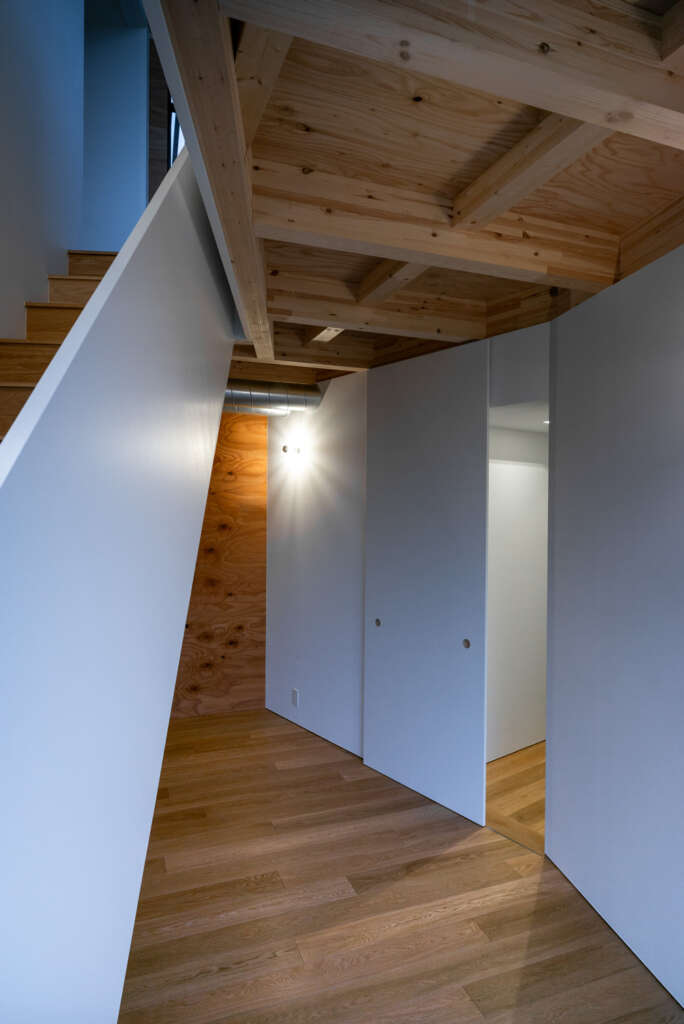
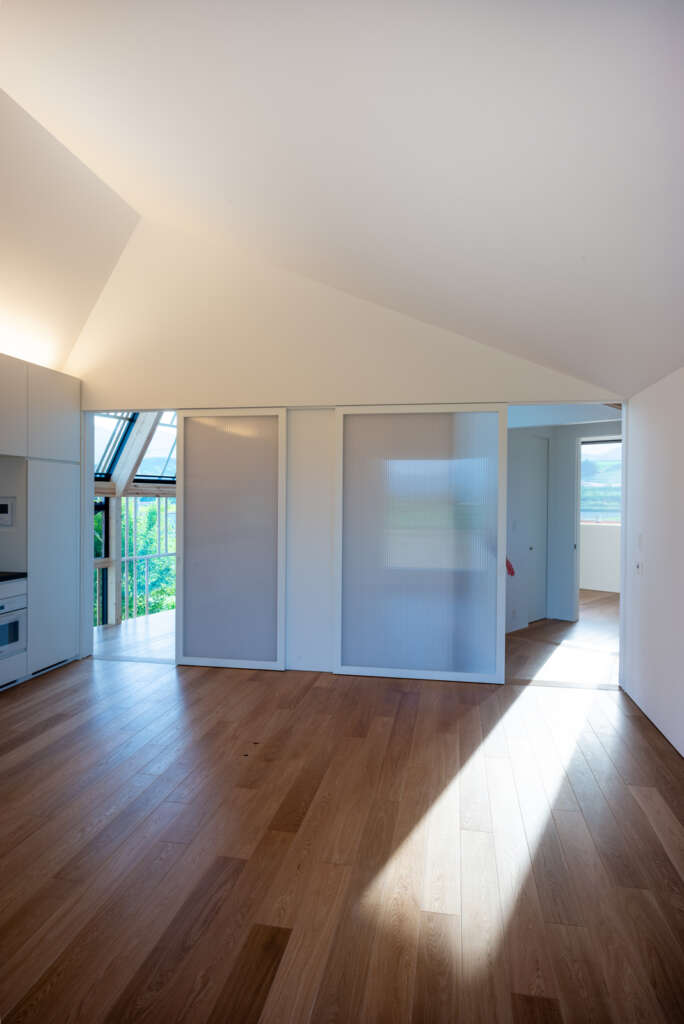
Growing
Ironically, the idea of breaking a large simple volume into pieces was triggered by an initial requirement which in the end was lifted: In light of the volatile construction market, the clients had requested to study the possibility of splitting the project into phases.
While we ended up constructing phases 1 and 2 together, the design and construction of a third —a shed for storage and workshop— originally intended as a future annex, began before phase 1 was even completed.
The strategy of splitting a larger volume into pieces and rotating them provides the basis for the annex(es) to preserve the integrity of the overall, complement not undo it.
Parallel to the road and less tall than the main house, this annex turns the tables. It seems to be not the last but the first of the three black volumes, with more to grow in twists and turns towards the east and south…
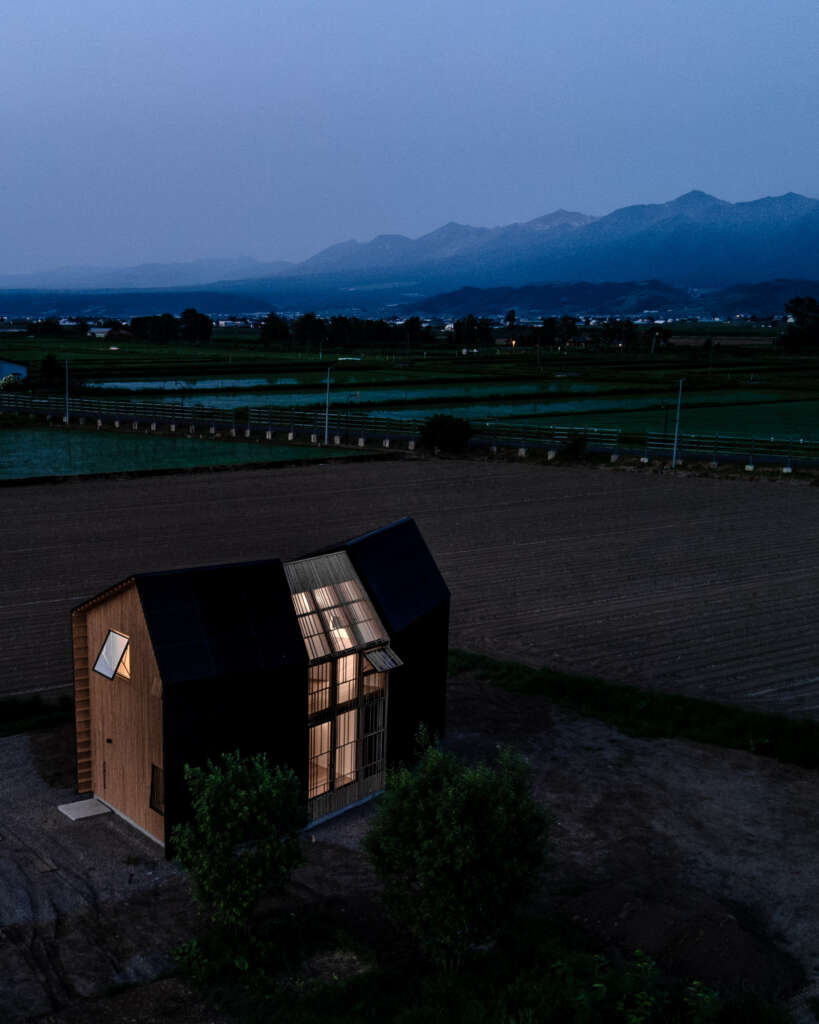
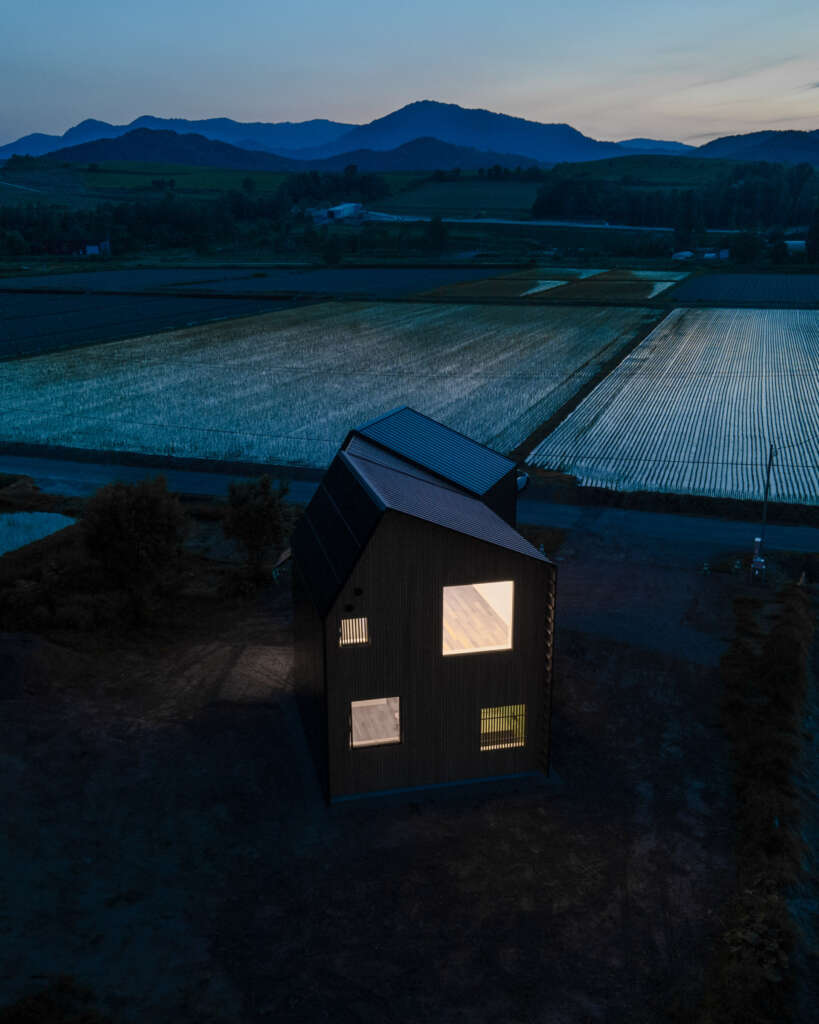
Prototype
A bigger question remains: Is leaving the city for the countryside a viable path towards a sustainable future? While densification through urbanisation remains the straightest path to reducing humanity’s carbon footprint, the thought that in 25 years, about 70% of us will occupy a mere 1% of the earth’s land mass does seem absurd and, worse, in many places socially unsustainable.
Seeking the countryside makes sense, but only in ways which are not increasing our per capita carbon footprint. The key is how we engage with, not exploit our natural environment.
The countryside’s open context affords freedom to test, to explore. Like the city in the past, the countryside is becoming the new catalyst for change. But where the movement to the city once left everything behind and sought the new in the city, moving to the countryside lets us reconnect with nature while staying connected with the city, made possible by the speed of technology.
The opportunity to learn from the countryside looks promising. In becoming active part of its surroundings to generate more energy than it consumes, House W is a (scalable) proof of concept.
Project Details
- Location: Nakafurano, Hokkaido, Japan
- Type: Residential
- Status: Completed
- Project Team: Florian Busch, Sachiko Miyazaki, Yutaro Osawa, Reo Shima, Christian Baumgarten
- Structural Engineering: Kawata Tomonori Structural Engineers (Tomonori Kawata)
- Consultant: Jan Warzecha (Integrated Energy Concept)
- Contractor: Hashimoto Kawashima Corp.
- Environmental Engineering: ARIGA Planning Co., Ltd. (Geothermal)
- Environmental Engineering: Clenergy Japan (Photovoltaics)
- GFA: 163 m² (+35m² barn)
- Structure: Timber


